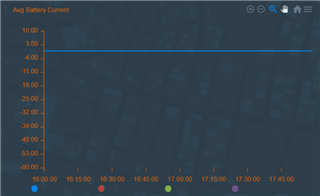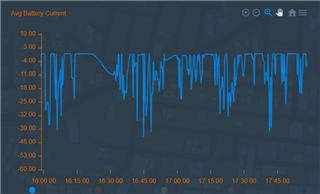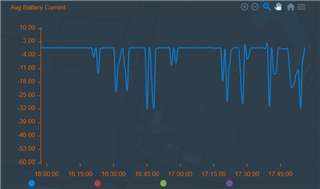Hi
I have been working on fixing the SOH inaccuracy as mentioned in this thread:https://e2e.ti.com/support/power-management-group/power-management/f/power-management-forum/1315791/bq34z100-g1-soh-calculation-mismatch-with-the-actual-state-of-battery
As suggested, the SOH Load 1 value was lowered according to the average load current instead of the maximum load current of the vehicle, i.e. 45A to 15A, and we noticed the SOH corrected from 91% to 96%. For further correcting the value of SOH to 100%, the SOH Load 1 value was further decreased to 6A and then 3A now. With this reduction of SOH Load 1 value, the SOH % derived from the gauge jumped to 97% and 98%.
To Summarize
SOH Load 1 Value SOH Percentage
45A 91%
15A 96%
6A 97%
3A 98%
As per our testings, we have observed that noticeable Increase in SOH%. But there are concerns regarding this.
- Is lowering the SOH Load 1 Current value the right approach? Since this is an EV application the average load current value is different for every discharge cycle. i.e. dependent on the driving pattern and the load of the vehicle itself.)
- What should be the correct value to be set for SOH Load 1 when all of the below scenarios can occur across different discharge cycles?
- Scenario A: The vehicle is not used continuously and relaxed overnight. The Fuel gauge will be reading 0A for a long period.

- Scenario B: The vehicle is used continuously with heavy load. The average current (0A to Max current of 45A) here for this discharge cycle will be higher.

- Scenario C: The vehicle may run continuously for a few minutes and then rest for the remaining few. The Fuel gauge will read 45A (max current) and 0A as well for different periods. i.e. The average current of the SOH Load 1 value is different for each discharge cycle.

- Scenario A: The vehicle is not used continuously and relaxed overnight. The Fuel gauge will be reading 0A for a long period.
- If it is incorrectly lowered to the bare minimum, what are the probable repercussions of this in the long run? Will any other values become erroneous as the Battery packs go along with the discharge cycles?
Please assist with the answers to the above three questions.
Regards
Anvin


